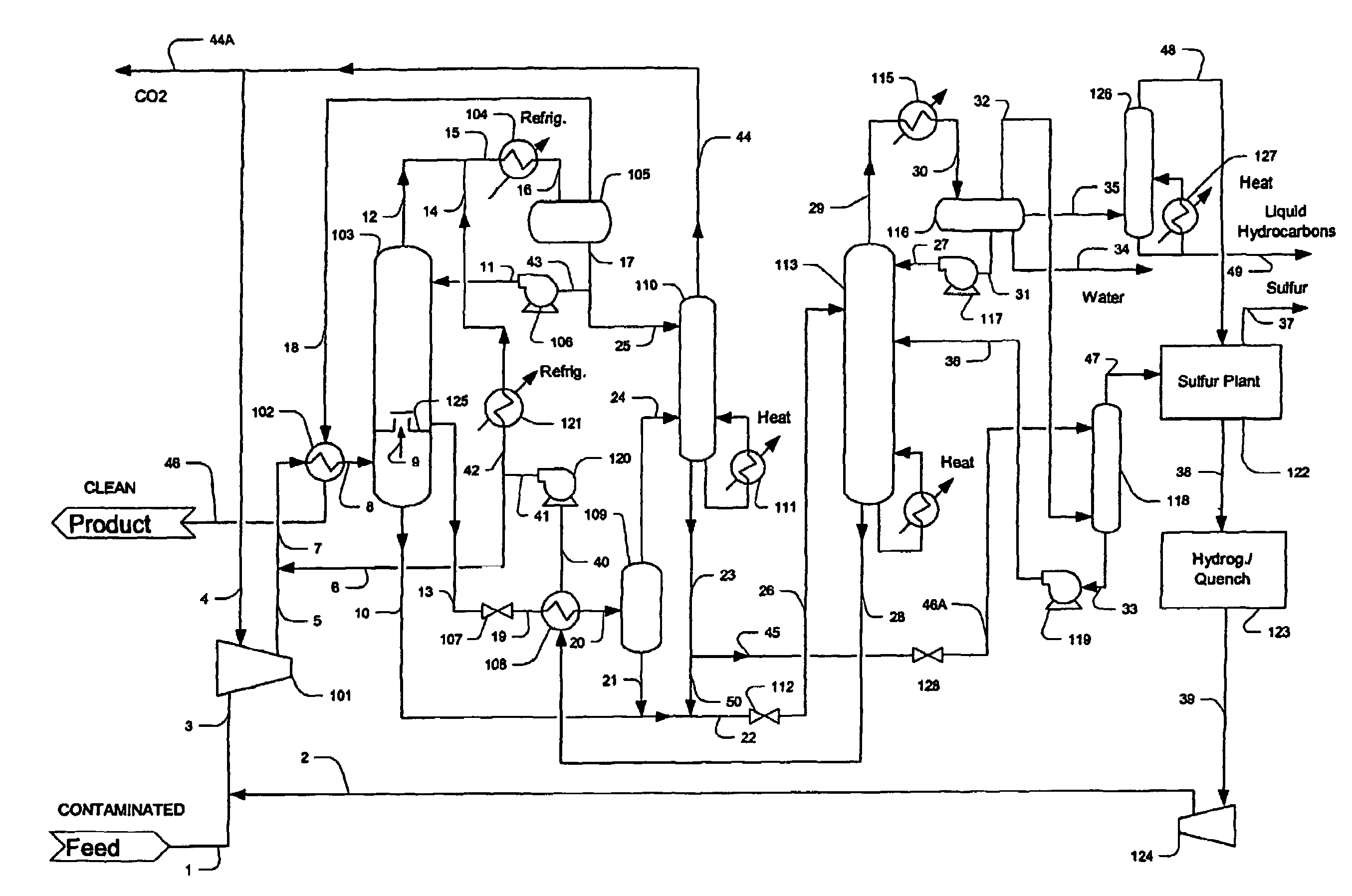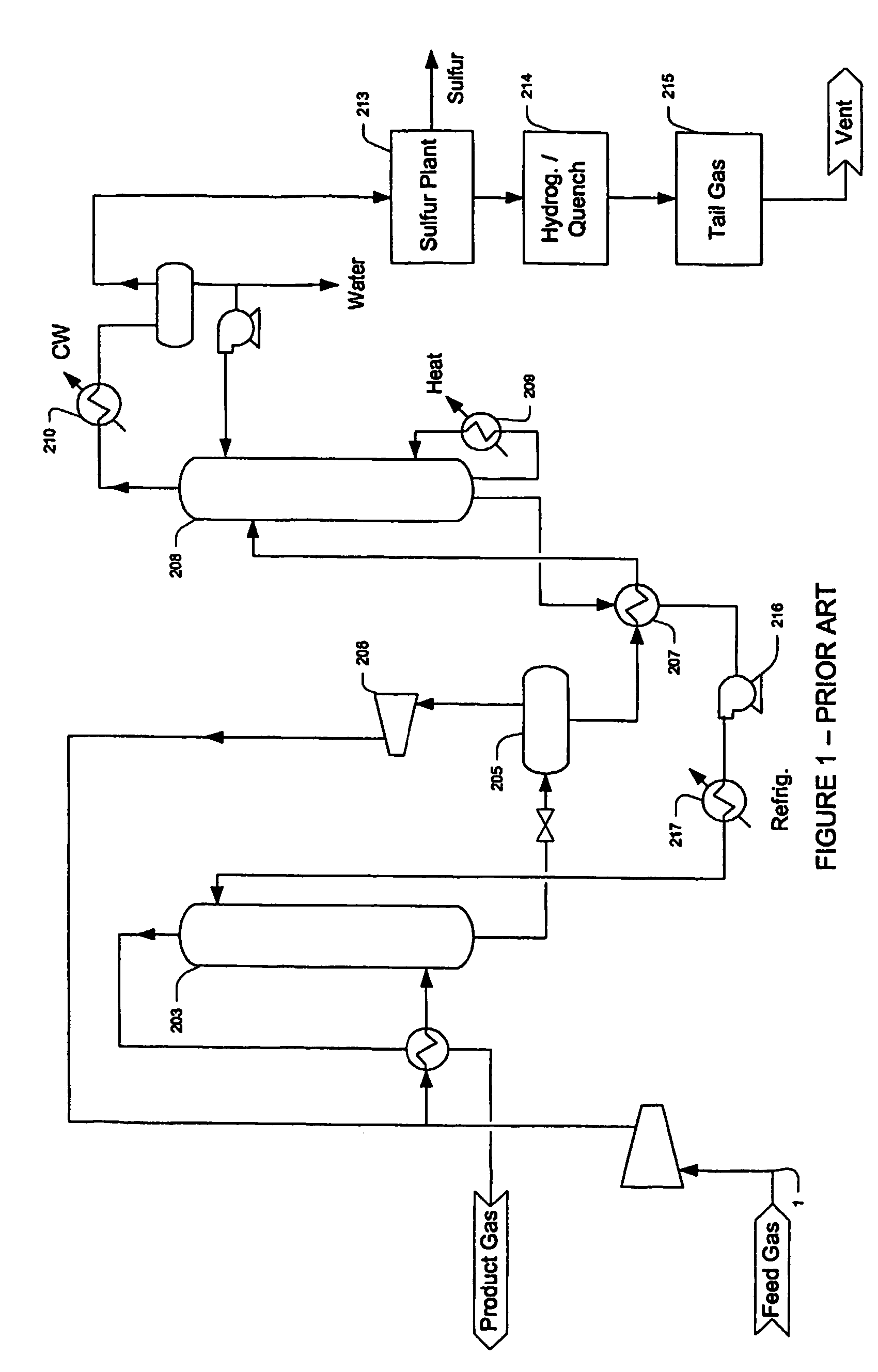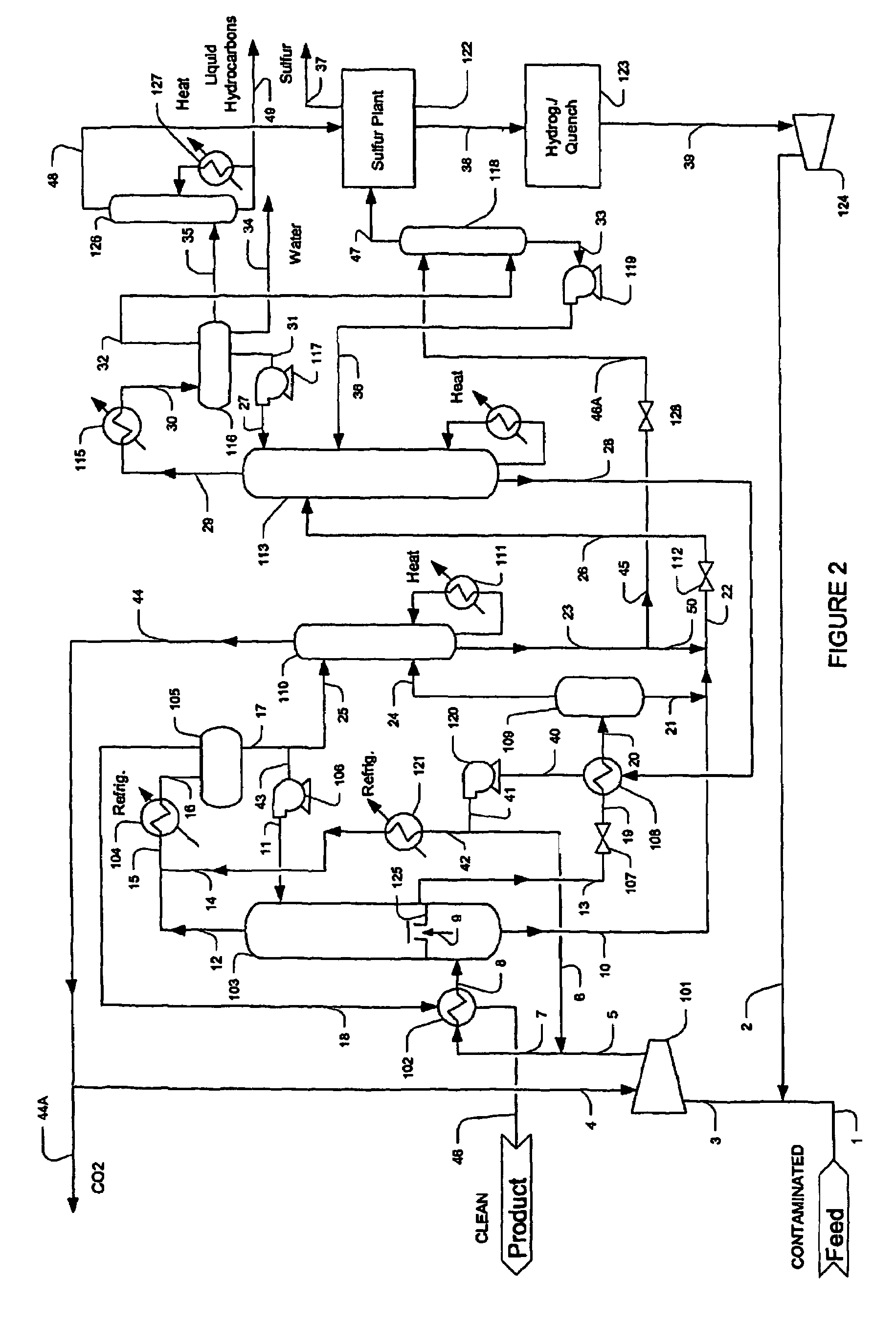Configurations and methods for acid gas and contaminant removal with near zero emission
a technology of contaminant removal and gas processing, applied in the direction of liquid degasification, separation processes, sulfur compounds, etc., can solve the problems of increasing solvent circulation and energy consumption, increasing solvent absorption, and increasing the temperature rise of the absorber. , to achieve the effect of increasing the selective absorption of hydrogen sulfide and reducing the temperature rise of the absorber
- Summary
- Abstract
- Description
- Claims
- Application Information
AI Technical Summary
Benefits of technology
Problems solved by technology
Method used
Image
Examples
Embodiment Construction
[0020]The inventors discovered that gas comprising relatively high levels of acid gases and other contaminants can be treated in a process that significantly reduces, if not even almost eliminates emissions of sulfurous components, hydrocarbons, and / or other contaminants. Contemplated process will typically produce a dehydrated gas with a low hydrocarbon dewpoint that will meet pipeline sales gas specifications.
[0021]Furthermore, contemplated configurations will produce a hydrogen sulfide rich and hydrocarbon depleted gas that can be efficiently processed in a sulfur plant, and the tail gas of the sulfur plant is (after hydrogenation and quenching) recycled back to the feed gas. Still further, the hydrocarbons separated and recovered from the feed gas in contemplated configurations are generally suitable for use as a liquid fuel after further processing. Thus, it should be especially appreciated that contemplated configurations and methods allow for feed gas processing of a contamin...
PUM
| Property | Measurement | Unit |
|---|---|---|
| pressure | aaaaa | aaaaa |
| pressure | aaaaa | aaaaa |
| pressure | aaaaa | aaaaa |
Abstract
Description
Claims
Application Information
 Login to View More
Login to View More - R&D
- Intellectual Property
- Life Sciences
- Materials
- Tech Scout
- Unparalleled Data Quality
- Higher Quality Content
- 60% Fewer Hallucinations
Browse by: Latest US Patents, China's latest patents, Technical Efficacy Thesaurus, Application Domain, Technology Topic, Popular Technical Reports.
© 2025 PatSnap. All rights reserved.Legal|Privacy policy|Modern Slavery Act Transparency Statement|Sitemap|About US| Contact US: help@patsnap.com



